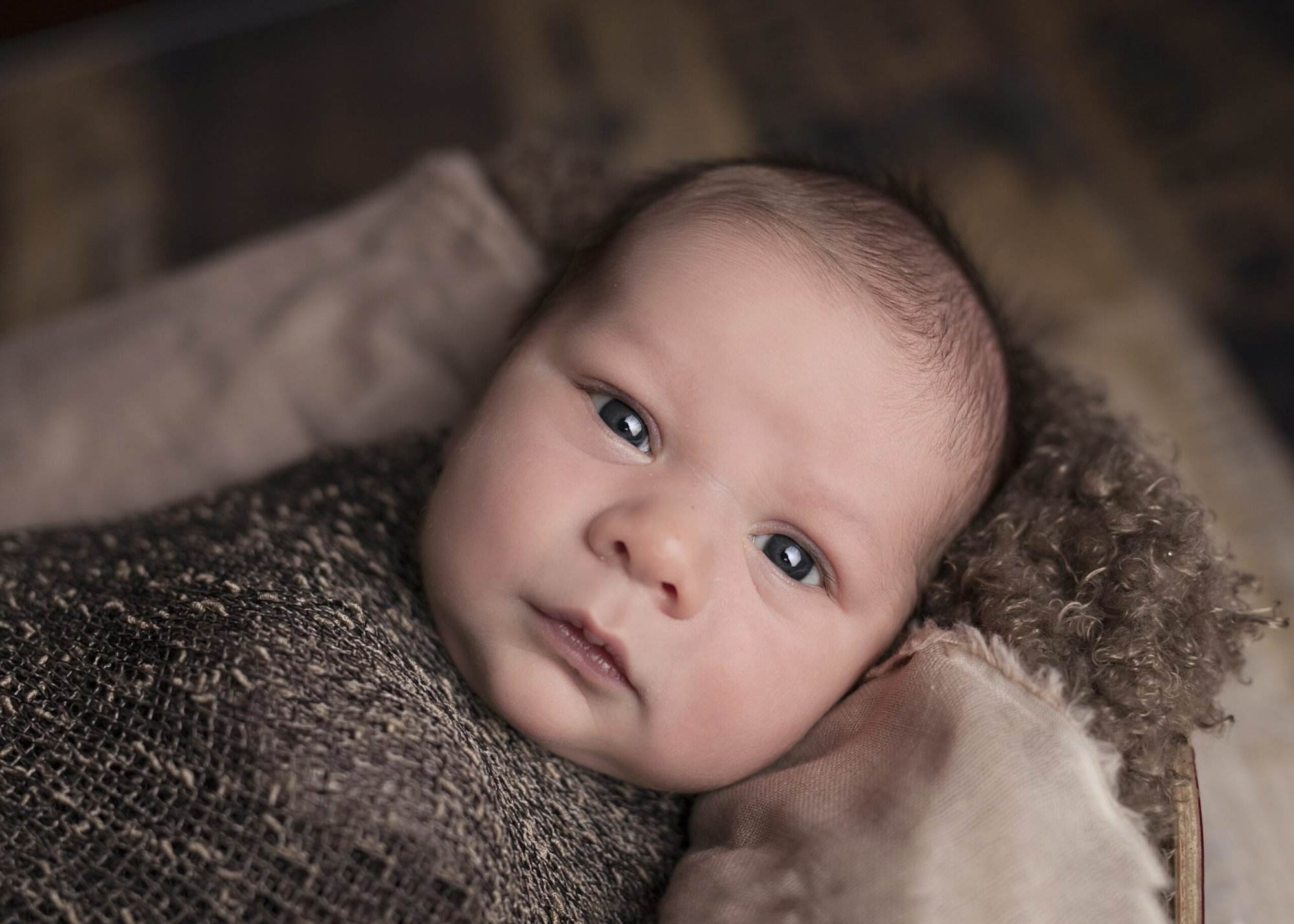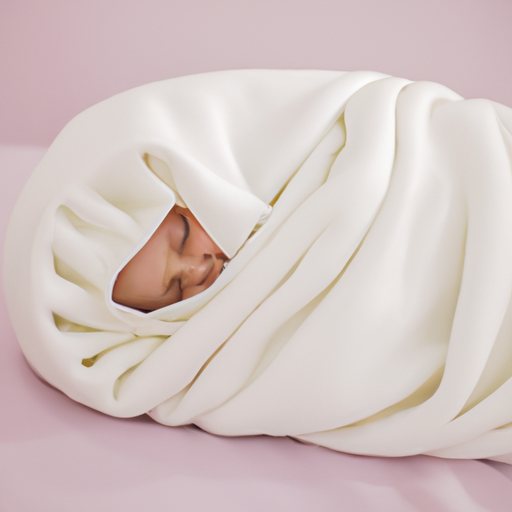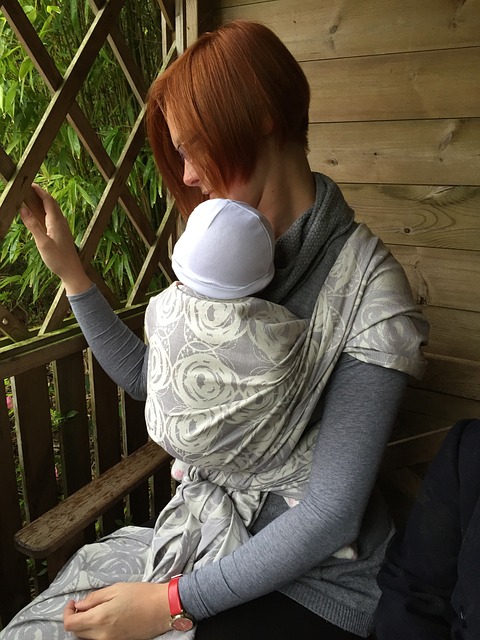Are you a new parent wondering when it’s time to switch your baby out of their infant car seat? In this article, we’ll explore the guidelines and factors to consider when making this important decision. We’ll discuss the age, weight, and height recommendations, as well as the different types of car seats available for your growing child. By understanding the signs and knowing when and why to make the switch, you’ll gain the confidence to ensure your precious little one is always safe on the road.

Factors to Consider
Height and Weight
When deciding when to switch your baby out of an infant car seat, one of the key factors to consider is their height and weight. Most infant car seats have weight and height limits, and it is important to adhere to these guidelines for optimal safety. As your baby grows, their weight and height may exceed the limits specified by the car seat manufacturer, indicating a need for transition to a larger car seat.
Age and Developmental Milestones
Another factor to consider is your baby’s age and developmental milestones. While weight and height are important factors, it is also crucial to consider whether your baby has reached certain developmental milestones. These milestones, such as sitting up unassisted or having good head control, may indicate that your baby is ready to transition to a different car seat that can better accommodate their physical capabilities.
Car Seat Manufacturer’s Guidelines
Always refer to the car seat manufacturer’s guidelines when considering a switch from an infant car seat. Each car seat manufacturer provides specific instructions and recommendations for when to transition to a new seat. These guidelines are based on extensive safety testing and research, ensuring that your baby remains safe while traveling in a car.
Local Laws and Regulations
In addition to the car seat manufacturer’s guidelines, it is essential to familiarize yourself with the local laws and regulations regarding car seat usage. These laws vary from region to region and may include specific age, weight, and height requirements for children traveling in cars. By following the local laws and regulations, you can ensure that you are providing the safest environment for your baby.
Baby’s Comfort and Safety
Lastly, consider your baby’s comfort and safety. If your baby appears uncomfortable in their current car seat or if there are any signs of discomfort, such as excessive crying or fussiness during car rides, it may be an indication that a switch to a different car seat is necessary. Additionally, if you notice any safety concerns, such as difficulty securing your baby properly or if their legs extend beyond the car seat shell, it is crucial to prioritize their safety and make the transition to a new car seat.
Signs That It’s Time for a Switch
Exceeding Maximum Height or Weight Limits
One of the most obvious signs that it’s time to switch your baby out of an infant car seat is when they exceed the maximum height or weight limits specified by the car seat manufacturer. These limits are in place to ensure that your baby is properly secured and protected while traveling in a car. Exceeding these limits can compromise the effectiveness of the car seat, making it necessary to transition to a larger seat that can accommodate your growing child.
Baby’s Head Reaches the Top of the Seat
Another sign to watch out for is when your baby’s head reaches the top of the infant car seat. A properly fitting car seat should have at least an inch of space between the top of your baby’s head and the top of the seat. If your baby’s head reaches the top or even extends beyond it, it may indicate that they have outgrown the infant car seat and need to transition to a bigger seat.
Severe Discomfort or Discontinuation of Use
If you notice that your baby is experiencing severe discomfort while in their car seat or if they continually resist or refuse to be placed in the seat, it might be time for a switch. It is important to prioritize your baby’s comfort and ensure that they have a positive car seat experience. If the current car seat is no longer providing comfort to your baby, it may be time to explore other options.
Inability to Buckle Baby Securely
An inability to buckle your baby securely in their car seat is a concerning sign that it’s time for a switch. As your baby grows, they may reach a point where the straps of the infant car seat no longer fit them properly or are difficult to secure snugly. Proper buckling is vital for your baby’s safety, and if you are unable to achieve a secure fit, it is a clear indication that it’s time to transition to a different car seat that can accommodate their size.
Baby’s Legs Extend Beyond the Car Seat Shell
If your baby’s legs extend beyond the car seat shell, it may indicate that they have outgrown the infant car seat. A properly fitting car seat should provide adequate space for your baby’s legs within the seat shell. When your baby’s legs extend beyond the car seat shell, it may compromise their safety and comfort, necessitating a switch to a car seat that can accommodate their growing legs.
Transition to a Convertible Car Seat
Understanding Convertible Car Seats
When transitioning your baby out of an infant car seat, one option to consider is a convertible car seat. As the name suggests, convertible car seats have the flexibility to be used in both rear-facing and forward-facing positions, accommodating your child’s growth and providing extended use.
Rear-facing vs. Forward-facing
Convertible car seats offer both rear-facing and forward-facing options. Rear-facing is the safest position for infants and young children, as it provides better support for their head, neck, and spine. It is recommended to keep your child in a rear-facing position for as long as possible, ideally until they reach the maximum height or weight limit specified by the car seat manufacturer.
Once your child outgrows the rear-facing position, you can transition them to the forward-facing position. However, it is important to note that keeping your child in the rear-facing position for an extended period, even beyond the minimum requirements, offers increased safety.
Proper Installation and Adjustment
When transitioning to a convertible car seat, proper installation is paramount. It is crucial to carefully read the manufacturer’s instructions and follow them precisely. Ensure that the seat is securely installed, both using the seatbelt and/or the LATCH system, as recommended by the car seat manufacturer.
Adjusting the car seat to fit your child properly is also vital. Follow the manufacturer’s guidelines for harness height and tightness, ensuring a snug fit without being too tight. Proper adjustments will enhance your baby’s safety and comfort while traveling in the car.
Harness Strap Positioning
Pay close attention to the positioning of the harness straps when transitioning to a convertible car seat. The harness straps should be positioned at or just below your child’s shoulders for the rear-facing position. As you transition to the forward-facing position, the harness straps should be positioned at or just above their shoulders.
It is essential to check and adjust the harness straps every time you place your child in the car seat, ensuring that they are properly positioned for optimal safety.
Transitioning Strategies
Transitioning from an infant car seat to a convertible car seat can be a significant change for your baby. To make the transition smoother, consider implementing a few strategies:
-
Gradual Introductions and Familiarization: Start by introducing your baby to the new convertible car seat gradually. Sit them in the seat while parked, allowing them to acclimate to the new surroundings. Take short practice drives to help them become familiar with the new car seat.
-
Offer Comfort and Distraction: Provide comfort items, such as their favorite blanket or stuffed toy, to help ease any anxiety or discomfort during the transition. Additionally, offer distractions, such as toys or books, to keep your baby occupied and content during car rides.
-
Use Transitional Gear: If your baby is having trouble adjusting to the new car seat, consider using transitional gear designed to provide additional support and comfort. For example, there are head and body supports available that can help your baby feel more secure and cozy in the new seat.
Factors to Keep in Mind
Safety Standards and Certifications
When choosing a car seat, always prioritize safety. Look for car seats that meet the required safety standards and certifications. These standards ensure that the car seat has undergone rigorous testing and meets the necessary safety criteria.
Some common safety certifications to look for include the FMVSS (Federal Motor Vehicle Safety Standards), NHTSA (National Highway Traffic Safety Administration) approval, and the JPMA (Juvenile Products Manufacturers Association) certification. Verifying these certifications can provide peace of mind in knowing that the car seat meets the highest safety standards.
Car Seat Expiration Dates
Car seats have expiration dates for a reason. Over time, the materials used in the car seat can degrade, potentially compromising its safety and effectiveness in protecting your baby. Always check the expiration date on the car seats you are considering, and avoid using expired car seats.
If you have been using an infant car seat for an extended period and are considering transitioning to a new car seat, check the expiration date to ensure that the current seat is still safe for use. If the car seat has expired, it is crucial to replace it with a new one that meets the latest safety standards.
Budget and Affordability
While safety is the top priority, it is also important to consider your budget and affordability. Car seats can range in price, with more features and higher-end options typically costing more. Set a budget and explore car seat options within that range. Remember that it is possible to find safe and reliable car seats at various price points, so do your research and choose the best option that fits your budget.
Additional Features and Accessories
Consider any additional features and accessories that may enhance your baby’s comfort and convenience. Some convertible car seats offer features like adjustable recline positions, built-in cup holders, or removable seat covers for easy cleaning. Assess which features are important to you and your baby and choose a car seat that offers those features.
When it comes to accessories, it is generally recommended to stick to the accessories provided by the car seat manufacturer. Aftermarket accessories, such as car seat head supports or inserts, may not be tested or approved by the car seat manufacturer, potentially compromising the safety of the car seat. Always consult the car seat manufacturer’s guidelines before using any aftermarket accessories.
Compatibility with Strollers
If you rely on a stroller for your daily activities, consider the compatibility of the car seat with your existing stroller. Some car seat models are designed to integrate seamlessly with specific stroller models, allowing for easy transfer of the baby from the car to the stroller.
Check for compatibility between the car seat and the stroller, ensuring that they can be securely attached to each other. This compatibility will provide convenience and ease when transitioning your baby between the car and the stroller.

Common Concerns and FAQs
Can I Use a Hand-Me-Down Car Seat?
Using a hand-me-down car seat is generally discouraged due to concerns about safety and compatibility. Car seats have expiration dates, and using an expired or older model may compromise its effectiveness in protecting your baby.
Additionally, car seat technology and safety standards evolve over time, so an older car seat may not meet the current safety requirements. It is always best to use a new car seat or one that has been verified to be free from any damage or recalls, as recommended by the car seat manufacturer.
What if My Baby Hates the New Car Seat?
Transitioning to a new car seat can be challenging for some babies. If your baby appears to dislike the new car seat, there are a few strategies you can try:
-
Gradual Introductions: Allow your baby to get familiar with the new car seat gradually. Start by letting them sit in the seat while parked and gradually progress to short practice drives to help them adjust to the new surroundings.
-
Offer Comfort and Distraction: Provide comfort items, such as their favorite blanket or stuffed toy, to help ease any anxiety or discomfort during the transition. Distractions, such as toys or books, can also help keep your baby occupied and content during car rides.
-
Make Car Rides Enjoyable: Try making car rides enjoyable for your baby by playing their favorite music, singing songs, or engaging them in interactive games. Creating a positive atmosphere in the car can help alleviate any negative associations your baby may have with the new car seat.
Can I Turn My Baby Forward-Facing at 1 Year?
While many parents may be eager to turn their baby forward-facing at 1 year, it is important to prioritize safety over convenience. The American Academy of Pediatrics (AAP) recommends keeping your child in a rear-facing position for as long as possible, ideally until they reach the maximum height or weight limit specified by the car seat manufacturer.
Rear-facing provides better support for your baby’s head, neck, and spine, and helps distribute the forces of a crash more evenly. By keeping your baby in a rear-facing position for an extended period, you are providing them with increased protection.
Is It Safe for My Baby to Wear a Winter Coat in the Car Seat?
No, it is not safe for your baby to wear a bulky winter coat in the car seat. Thick padding or layers, such as a winter coat, can create a significant gap between the car seat harness and your baby’s body, compromising the effectiveness of the harness.
Instead, dress your baby in thin layers and use a car seat cover or blanket to keep them warm. Once your baby is buckled securely in the car seat, you can place their coat or a blanket over them for additional warmth. Remember to remove any extra layers and adjust the harness straps to ensure a snug fit.
Can I Use a Car Seat Head Support or Aftermarket Accessories?
It is generally recommended to avoid using car seat head supports or aftermarket accessories that have not been tested or approved by the car seat manufacturer. These accessories may interfere with the proper functioning of the car seat or compromise the safety of the seat.
If you feel that your baby needs additional support, such as a head support, it is best to consult the car seat manufacturer’s guidelines or contact their customer service for approved options. Always prioritize the safety and integrity of the car seat by adhering to the manufacturer’s recommendations and guidelines.
Tips for a Smooth Transition
Gradual Introductions and Familiarization
Transitioning from an infant car seat to a convertible car seat can be a big change for your baby. To help ease this transition, gradually introduce your baby to the new car seat. Start by allowing them to sit in the new seat while the car is parked, giving them an opportunity to become familiar with the surroundings. Take short practice drives to gradually acclimate them to the new car seat.
Ensure Proper Fit and Installation
Proper fit and installation are crucial for your baby’s safety. Carefully read the manufacturer’s instructions and follow them precisely when installing the car seat. Ensure that the seat is securely installed, using either the seatbelt or the LATCH system, as recommended by the car seat manufacturer.
Adjust the seat to fit your baby properly, following the guidelines provided by the manufacturer. Check the harness height and tightness, ensuring a snug fit without being too tight. Regularly inspect and adjust the seat to maintain optimal safety.
Maintain a Rear-facing Position as Long as Possible
As mentioned earlier, keeping your baby in a rear-facing position for as long as possible is safest. Even when transitioning to a convertible car seat, strive to keep your baby rear-facing until they reach the maximum height or weight limit specified by the car seat manufacturer. Rear-facing provides better support for your baby’s head, neck, and spine, reducing the risk of injury during a car accident.
Use Transitional Gear
If your baby is having difficulty adjusting to the new car seat, consider using transitional gear designed to provide additional support and comfort. Some car seat manufacturers offer inserts, head supports, or padding specifically designed to help your baby feel more secure in the new seat. Check the manufacturer’s guidelines to ensure that any transitional gear you use is tested and approved for use with the specific car seat model.
Offer Comfort and Distraction
Make car rides as comfortable and enjoyable for your baby as possible. Offer comfort items, such as their favorite blanket or stuffed toy, to help them feel secure and relaxed. Use distractions, such as toys or books, to keep your baby entertained during car rides. A positive and comforting environment can contribute to a smoother transition for your baby.

Conclusion
Knowing when to switch your baby out of an infant car seat is essential for their safety and comfort while traveling in a car. Factors such as height, weight, age, developmental milestones, and adherence to car seat guidelines and local laws must be considered. Signs that it’s time for a switch include exceeding weight and height limits, baby’s head reaching the top of the seat, discomfort or discontinuation of use, inability to buckle baby securely, and baby’s legs extending beyond the car seat shell.
Transitioning to a convertible car seat requires an understanding of the different positions, proper installation, adjustment, and harness strap positioning. It is important to keep in mind factors such as safety standards, expiration dates, budget, additional features, and compatibility with strollers. Common concerns and FAQs address using hand-me-down car seats, baby’s dislike of the new car seat, turning forward-facing at 1 year, winter coat usage, and aftermarket accessories.
Tips for a smooth transition include gradual introductions, ensuring proper fit and installation, maintaining a rear-facing position as long as possible, using transitional gear, and offering comfort and distraction. By considering all these factors, addressing common concerns, and following the tips provided, you can successfully transition your baby out of an infant car seat, ensuring their continued safety and comfort on the road.





